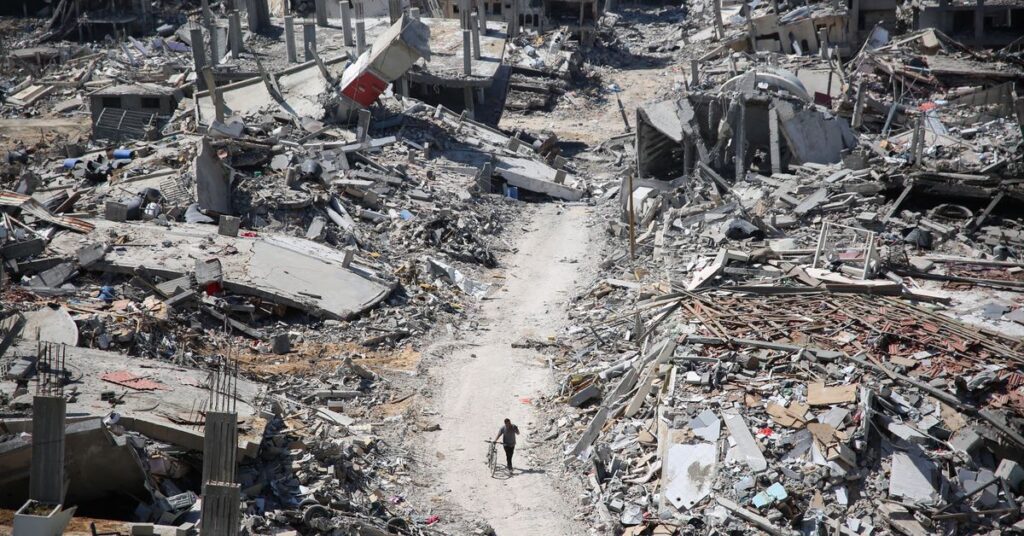Just a few days after the October 7 Hamas terrorist attacks in Israel, which killed more than 1,200 Israelis and took place six months ago this week, Defense Minister Yoav Gallant told Israeli troops, “What was in Gaza, will be no more.”
On that pledge at least, Israel has followed through — and then some. According to the Gaza Health Ministry, more than 31,000 people have been killed in the territory, around 1.4 percent of the population. Gaza is facing a crisis level of hunger, a situation that will worsen after several aid organizations have scaled back their activities following an Israeli airstrike that killed seven aid workers this week. The Gaza Strip has been pulverized, with about 35 percent of its buildings destroyed, according to the United Nations. And around 85 percent of Gaza’s population has been displaced.
In many respects, however, the war has confounded expectations. In the early days following the Hamas attacks, Israel called up some 360,000 reservists, the largest military mobilization in the country’s history. While the actual numbers deployed into Gaza have not been revealed, estimates put the number at just about 30,000 troops as of the end of last year, and many of those have now been withdrawn.
When Israel launched its ground operations in late October, Israeli commanders predicted it would take around three months, before transitioning to a new phase involving stamping out last pockets of resistance and setting up a new governance structure for Gaza.
Today, that timeline looks extremely optimistic at best.
In late January, US intelligence agencies estimated that only about 20 to 30 percent of Hamas’s fighters had been killed and that the group still had enough munitions for months worth of strikes. Six months in, there’s still no end in sight, and the Israeli government’s post-war plans still look exceedingly vague.
A mixed regional picture
Beyond Gaza itself, there were widely held concerns in the days…
Read the full article here





